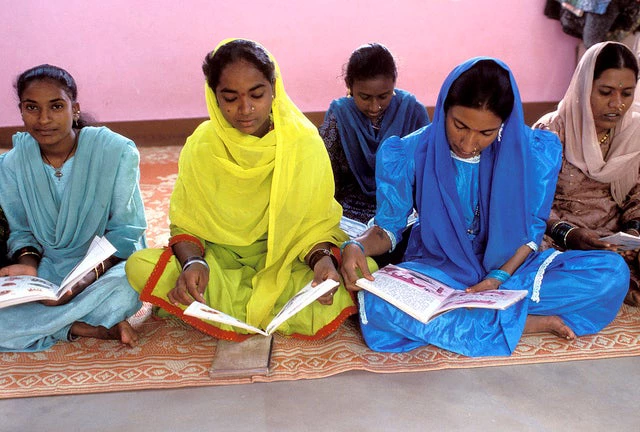
If you want to provide more opportunities to girls, you shouldn’t only provide them with an education – you also need to change perceptions of gender roles so that, when they grow up, girls can (among other things) fully contribute to the household’s livelihood. To achieve this, combining education with interventions for entrepreneurship and employment is the right way to go. This messages emerges not only from impact evaluations, but also from experiences on the ground and case studies of non-governmental organizations.
On March 8, 2016, in celebration of International Women’s Day, Marion Bunch and Deepa Willingham (a Rotarian and the founder of a program called Promise of Assurance to Children Everywhere or PACE), will participate in a World Bank event about inspiring women who made a difference in the world through innovative programs in the areas of education and health.
PACE is educating girls ages three to twenty-three in a village in West Bengal, India. The school started and remains small, with a total of about 350 girls enrolled since 2003. But retention rates are at 90 percent and almost 100 girls have now completed primary school. The schools currently admits 25 students each year, well below the demand as the school receives 100 applications each year. Admission is need-based in order to give priority to the most disadvantaged families.
What I find especially interesting is the fact that, based on community feedback, PACE has started to help women in the village find decent work through various initiatives. To help expand employment opportunities in the village, PACE is providing literacy and vocational training courses for women, many of whom go on to craft jewelry products sold locally and in the US thanks to a micro-loan.
Additional income generating activities include planting 10,000 fruit bearing trees and providing cycle-vans. Recently, an organic garden was initiated on the school’s grounds as a training facility for local farmers. PACE has also been actively upgrading water and sanitation facilities by installing 35 tube wells and 400 sanitation units. Without safe water at home, deworming children in the school did not work as well.
Deepa explained to me that when the project started, family incomes in the village were extremely low. There are signs that this has changed for the families that have benefited from the NGO’s programs, with many families making three to four times more than what they used to bring in (according to the families’ applications for their children to enroll in the school).
The attitudes of fathers towards their daughters have changed, as measured for example by their presence during the school’s cultural activities. Also, in the past many newborn girls in the village did not get birth certificates. This is changing simply because an official birth certificate is required for admission in the school.
Is the project cost effective? The cost for the package of services provided to girls is $375 and paid mostly through grants and other resources raised by the NGO. This package of services includes not only schooling (following a board approved curriculum), two meals per day, school supplies and uniforms, access to health care as needed, and after school enrichment programs in music, art, theater, yoga and life-skills training.
How does this compare to public schools? This is not an easy question to answer, because of complex funding by federal, state, and municipal governments for basic services as well as complementary programs (such as school meals for example). Estimates from various studies can be found through a rapid search on the web. It seems that overall PACE’s programs may be more costly than a typical public school, and also more costly than the programs implemented by low cost private schools. But the range of services provided by PACE is clearly broader, and quality is likely to be (much) higher.
As for PACE’s services for women, their cost is estimated at $175 per year. This includes the cost of the adult literacy program for reading, writing in Bengali, and accounting, as well as the vocational training program for jewelry making and tailoring.
On the occasion of International Women’s Day, at least two important lessons emerge from PACE. The first lesson is that we can learn from the experience of NGOs like PACE on how to combine multiple interventions – in education, but also in vocational training and basic health, in order to make a larger impact in the life of girls by changing attitudes towards gender roles. The second, and most important lesson is that beyond the important role of the state that we often emphasize in development work, committed individuals such as Deepa can truly make a difference in the life of girls and women.
To watch the event at the World Bank in celebration of International Women’s Day, click here on March 8, 2016 (2-3pm EST) or the recording afterwards.
If you enjoyed this post, you may be interested in other blogs about education in India.
Read about education in India on our website.
Find out more about the World Bank Group’s work on education on Twitter and Flipboard.


Join the Conversation